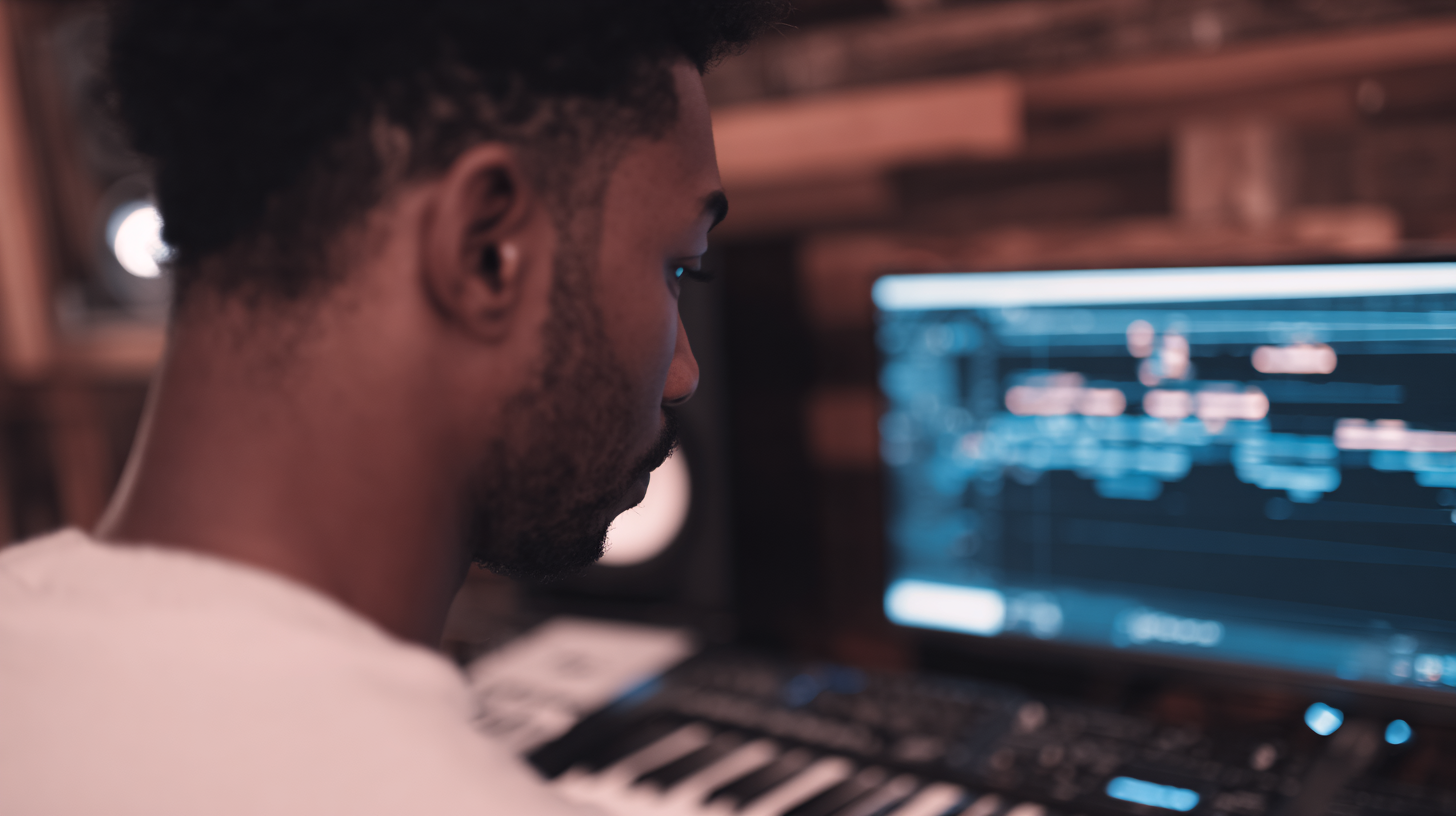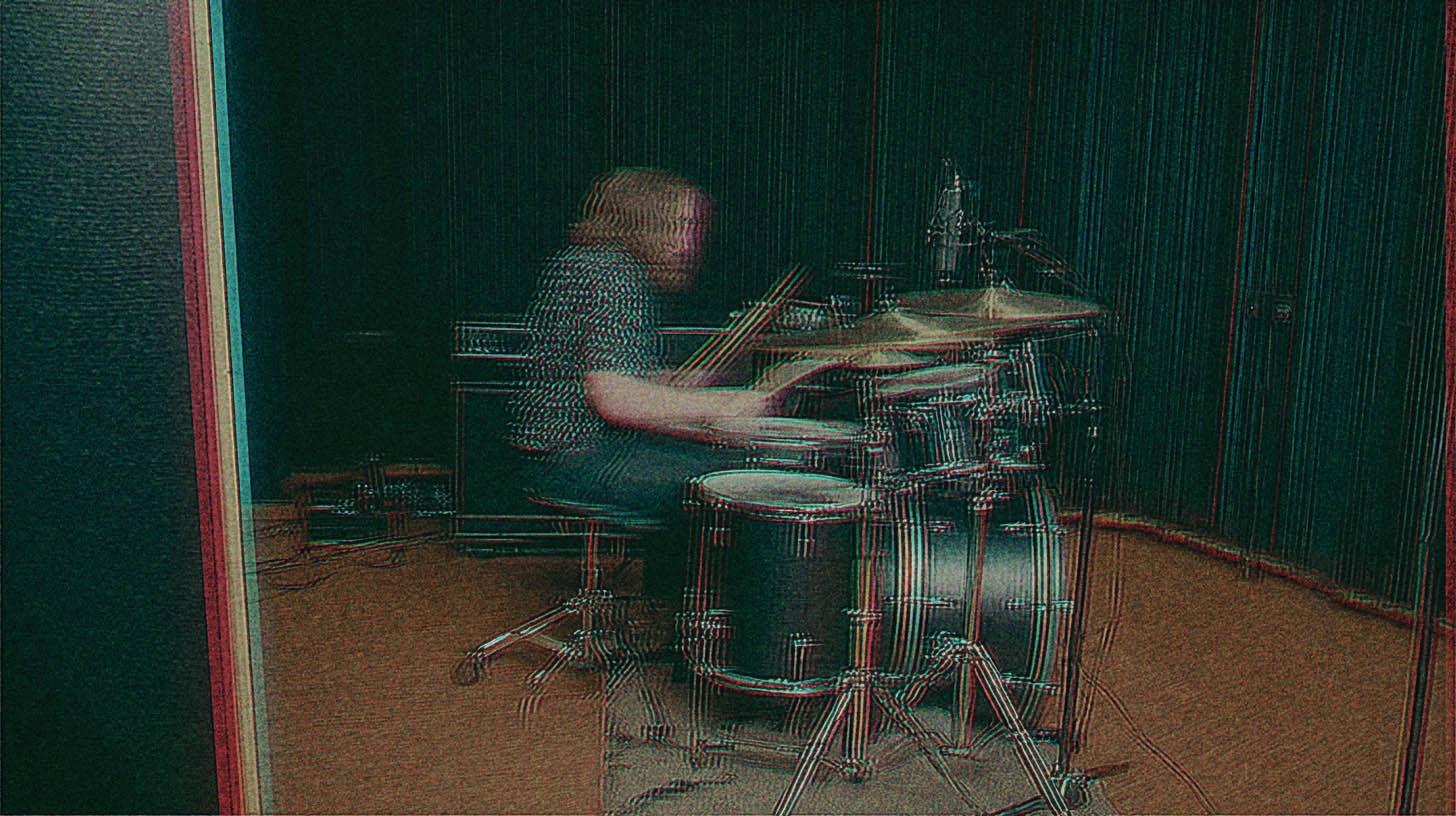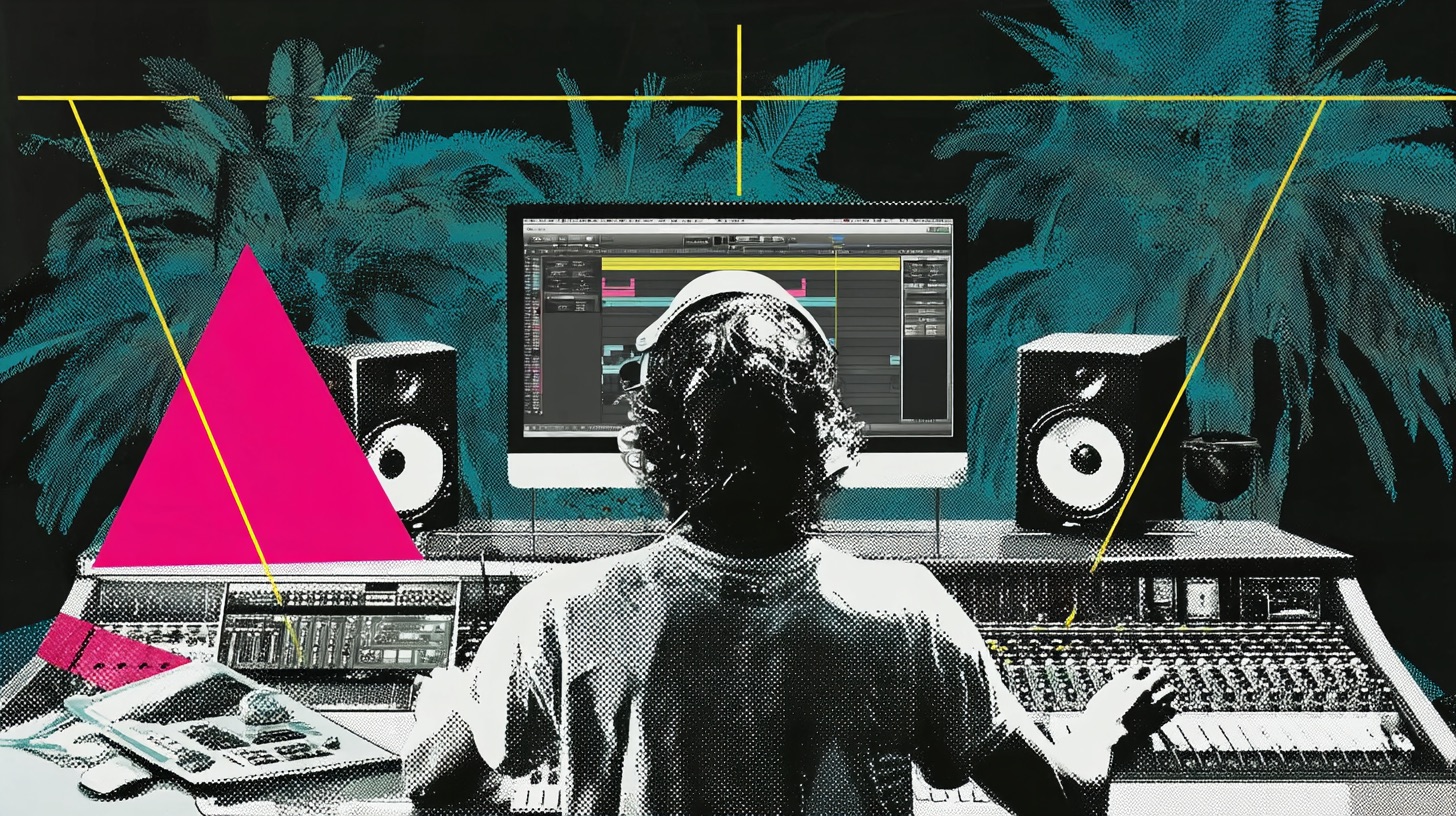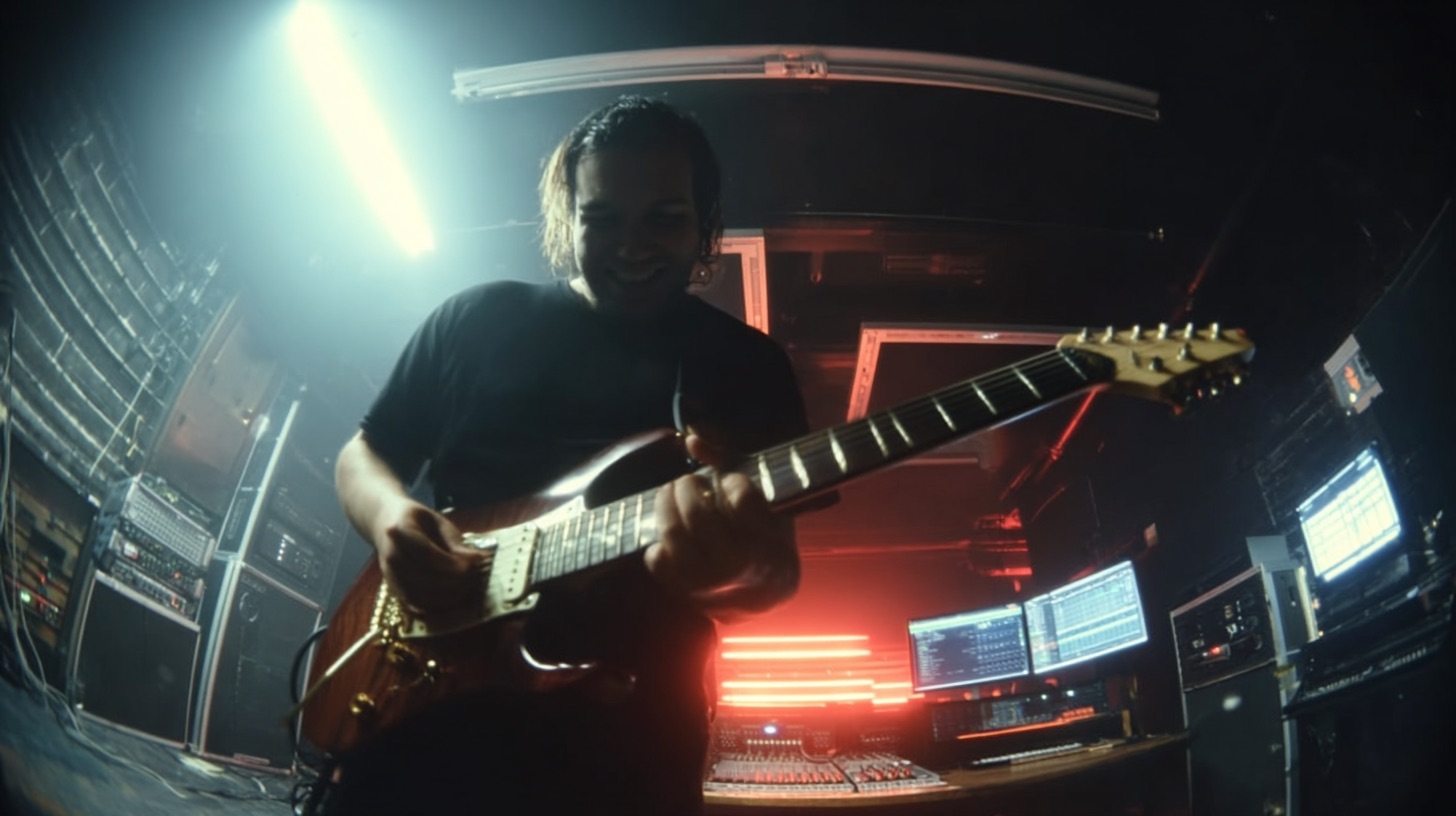
How To Tame Sibilance in a metal mix
Nail The Mix Staff
"Sssss" – that sound can drive you nuts. Sibilance. It's that harsh, piercing high-frequency hissing that turns an otherwise killer metal vocal into an ice pick to the eardrums. We’ve all been there, fighting those pesky esses, effs, and t's that just jump out of the mix and ruin everything. Especially in metal, where aggressive vocals, bright cymbals, and distorted guitars are already vying for space in the high-end, sibilance can be a total mix-killer. But don’t sweat it, we’re gonna dive into how to identify it, prevent it, and most importantly, fix it like a pro.
What the Hell IS Sibilance Anyway (And Why Metal Hates It)?
So, sibilance is basically the over-exaggeration of high-frequency sounds in speech, primarily "s", "sh", "ch", "z", and "t". Think of the frequencies typically between 4kHz and 10kHz, sometimes even higher, especially with certain vocalists or processing. In a dense metal mix, these frequencies can easily clash with crunchy guitars, shimmering cymbals (especially hi-hats and crashes), and even snare wire snap. When sibilance gets out of control, it makes vocals sound thin, harsh, and unprofessional. Screaming vocals? Oh boy, they can be a sibilance minefield if you're not careful, as the energy and harmonics can really emphasize those problematic frequencies.
Spotting Sibilance: Train Your Ears & Trust Your Eyes
Before you can fix it, you gotta find it. This means using your most important mixing tools: your ears, and sometimes, your eyes.
Critical Listening: The Old-School Way
Your ears are your best tool. Solo the vocal track. Listen specifically for those esses and tees. Do they jump out? Are they distracting? Then, listen to the vocal in the context of the full mix. Does the sibilance get louder or more piercing when everything else is playing? Sometimes what sounds okay in solo becomes a problem in the mix, and vice-versa. Pay attention to how sibilance interacts with hi-hats and cymbals – they often live in similar frequency ranges. A good pair of studio monitors (like Yamaha HS8s or ADAM Audio T7Vs) or reliable headphones (like Beyerdynamic DT 770 PROs or Sennheiser HD 650s) is crucial here.
Visual Aids: Spectrum Analyzers Are Your Friends
While your ears are king, a good spectrum analyzer can help you pinpoint the exact frequencies causing trouble. Pop an analyzer like Voxengo SPAN (it's free!) or the one built into FabFilter Pro-Q 3 on your vocal track. Watch for sharp, sustained peaks in that 4kHz-10kHz range when sibilant sounds occur. This visual confirmation can be super helpful, especially when you're training your ears or dealing with a really complex issue. Don't mix with your eyes, but use them to confirm what you're hearing.
Attack Sibilance Before It Starts: Prevention is Key
The easiest way to deal with sibilance is to minimize it at the source – during recording.
Mic Check 1, 2: Choosing & Placing Your Weapon
Got a vocalist who’s naturally sibilant? Some mics will make it worse. Super bright condenser mics (you know the ones, often cheaper ones trying to sound "detailed" by hyping the top end) can emphasize sibilance. For sibilant singers, a dynamic mic like the Shure SM7B is a classic choice for a reason – it's smoother in the highs and handles loud sources like a champ. Even an old Shure SM58 can be less sibilant than a bright condenser.
If you are using a condenser (like a Neumann U87 or a more budget-friendly Rode NT1), try placing it slightly off-axis to the singer's mouth. Pointing the mic capsule slightly away (maybe 15-30 degrees) from the direct source of the "s" sounds can sometimes reduce the harshness without losing too much top-end clarity. And yeah, a pop filter (like a Stedman Proscreen XL or a simple dual-layer nylon one) is essential for plosives ("p" and "b" sounds), but good mic technique overall helps.
Working With The Vocalist (If You Can)
Sometimes, a little coaching can go a long way. If you're also the engineer during tracking, you can sometimes guide the vocalist to soften their esses. This isn't always possible or desirable, especially with aggressive metal styles where that intensity is part of the sound, but it's worth considering. Simply asking them to be mindful of it can sometimes help.
The De-Esser: Your Go-To Sibilance Slayer
Okay, prevention is great, but sibilance will happen in your mixes. Enter the de-esser. This is your primary weapon for targeted sibilance removal.
So, How Does a De-Esser Work?
Think of a de-esser as a highly targeted, frequency-conscious compressor. It listens for specific, problematic high frequencies (your sibilance) and turns them down only when they cross a certain loudness threshold and only in that frequency range (if it's a split-band de-esser). Clever, right?
Dialing in Your De-Esser: The Nitty-Gritty
Most de-essers have similar controls. Here’s a typical rundown:
- Frequency/Range: This is where you tell the de-esser which frequencies to listen for and act upon. Most have a "listen" or "monitor" button that lets you hear only the frequencies the de-esser is targeting. Sweep this around until you hear the nasty "sss" and "tsh" sounds clearly isolated. For male vocals, this is often in the 5kHz-8kHz region. For female vocals or very bright screams, it can be higher, maybe 7kHz-12kHz.
- Threshold: This sets how loud the sibilance needs to be before the de-esser kicks in. Lower the threshold until you see (and hear) the de-esser just starting to reduce gain on the sibilant parts.
- Range/Depth/Reduction: This controls how much the de-esser turns down the sibilance once it's triggered. Don't go crazy here! Over-de-essing can make the vocalist sound like they have a lisp ("Thally thells thea thells by the thea thore"). Aim for a reduction that sounds natural. Often 3-6dB of reduction is plenty, but use your ears as the ultimate guide.
- Attack/Release: These control how quickly the de-esser reacts to sibilance and how quickly it lets go after the sibilant sound has passed. Faster attacks can be good for sharp, transient sibilance, but too fast can sound unnatural or miss the onset. Start with default settings and tweak if needed.
De-Esser Strategies: Plugins and Pro Tips
Armed with the basics, let's talk about some common tools and how to get the most out of them.
H4: Key Plugin Choices
There are tons of great de-esser plugins out there. Some classics include the Waves DeEsser or Waves R-DeEsser, the FabFilter Pro-DS (known for being super transparent and flexible), or the Eiosis E²Deesser. The Sonnox Oxford SuprEsser is another powerful and very tweakable option. Don't sleep on your DAW's stock de-esser either! Logic Pro X has a decent one, and Pro Tools users can use the Dyn3 Compressor/Limiter plugin with a de-esser preset as a starting point.
H4: Split-Band vs. Wideband: Know the Difference
Most modern de-essers operate in split-band mode. This means they only turn down the offending high frequencies, leaving the rest of the signal untouched. Wideband de-essers, on the other hand, turn down the entire signal (all frequencies) when sibilance is detected. This can sound less natural and more "pumpy" on vocals, especially if the sibilance is loud. Stick to split-band if you have the option for more transparent results. FabFilter Pro-DS, for example, excels at this.
H4: The Lisp Test: Don't Overdo It
Always A/B your de-essing. Listen carefully. If the vocalist starts sounding like they have a lisp (e.g., "s" sounds become "th"), you've gone too far. Back off the Range/Depth control or raise the Threshold. The goal is to control sibilance so it's not distracting, not to eliminate it entirely, which sounds unnatural and can harm intelligibility.
H4: Automation is Your Secret Weapon
Sibilance isn't always consistent throughout a vocal performance. Sometimes it's only an issue in certain words or phrases. Instead of applying heavy de-essing to the entire track, consider automating the de-esser's threshold to be more aggressive only on those problem spots. You can also automate the Range/Depth, or even automate its bypass so it's only active when needed. This targeted approach yields much more natural and effective results.
H4: Order of Operations: Where to Place Your De-Esser
Generally, it's a good idea to place your de-esser before any aggressive compression or EQ boosts in the high frequencies (like adding "air" with a Maag EQ4 emulation or similar). Why? Because compression can bring up the level of quiet sibilant sounds, making them more prominent, and EQ boosts can obviously emphasize them. By de-essing first, you're dealing with the problem before it gets exaggerated. That said, sometimes you might find you need a gentle de-esser after these processes too, or even two de-essers working lightly at different points in the chain (e.g., one for 5-7kHz and another for 8-10kHz). Experiment and see what works best for your track.
Level Up: Advanced Sibilance Tactics Beyond Just De-Essing
Sometimes a de-esser alone isn't enough, or you want more precision. Here are a few other techniques to keep in your back pocket.
Surgical EQ: The Scalpel Approach
A dynamic EQ is a game-changer here. Think FabFilter Pro-Q 3, Waves F6 Dynamic EQ, or the excellent (and often free with promotions) TDR Nova GE. You can set a very narrow EQ band right on the sibilant frequency (e.g., a peak at 6.5kHz) and have it duck down only when that specific frequency pokes out above a set threshold. It's like a super-precise de-esser, giving you incredible control.
Even with a standard parametric EQ, you can find the exact fundamental frequency of the sibilance (use that spectrum analyzer!) and make a very narrow cut (high Q value). Be careful not to make the vocal sound dull or unnatural. Sometimes a 2-3dB cut is all you need.
Want to learn more about pinpointing frequencies with EQ? Check out our EQ strategies for mixing modern metal.
Multiband Compression: Clamping Down on Problem Zones
Similar to dynamic EQ, a multiband compressor (like FabFilter Pro-MB, Waves C6 Multiband Compressor, or iZotope Ozone's Dynamics module) can be set up to compress just the sibilant frequency range. Create a band to cover, say, 5kHz-10kHz, dial in a fast attack and release, and a fairly high ratio. This can be very effective and transparent if done carefully, as it only affects that specific frequency zone when it gets too loud.
For more on how compression can shape your metal tracks, dive into our metal compression secrets.
Manual Gain Automation: The Control Freak's Method
This is the most time-consuming but can be the most transparent and natural-sounding method. Zoom right into the waveform of the vocal track in your DAW. Visually identify the sibilant "S" or "T" sounds – they often look like dense, high-frequency footballs. Use clip gain or volume automation to manually dip the level of just that sibilant part by a few dB. It’s tedious, yes, but gives you ultimate control, especially for isolated problem spots that other processors might miss or over-process. Software like iZotope RX has tools like "De-ess" or "Spectral Repair" that can do this almost surgically too, allowing you to attenuate just the sibilant frequencies within a selection.
Careful with Saturation and Excitement!
We all love what saturation (like from a Soundtoys Decapitator, FabFilter Saturn 2, or even a guitar amp sim on a send) or exciters can do to add vibe, aggression, and harmonics to vocals. But be warned: these processes can easily exaggerate sibilance or even create new harshness if you're not careful. If you're using them on vocals, make sure your sibilance is well under control before they hit the saturator, or you might find yourself needing another de-esser after it in the chain.
Sibilance Isn't Just a Vocal Problem in Metal
While vocals are the prime suspect, sibilance-like harshness can pop up elsewhere in your metal mix, especially with the high energy and bright timbres common in the genre.
Cymbals: That Piercing Hi-Hat or Crash
Overly bright hi-hats or splashy, sustained crashes can sometimes have a piercing quality that mimics sibilance, especially in that 6kHz-10kHz range (and sometimes even higher). If a hi-hat is too "tsss"-y and aggressive, you can try a de-esser on it, or a dynamic EQ to tame just those offending frequencies when the hat hits. Mic choice during tracking also plays a role – sometimes a darker ribbon mic like a Royer R-121 on overheads, or just careful placement of condenser overheads (like AKG C414s or Neumann KM184s), can prevent this from becoming an issue in the first place.

100+ Insanely Detailed Mixing Tutorials
We leave absolutely nothing out, showing you every single step
Distorted Guitars: The Fizz Monster
You know that high-end "fizz" or "chainsaw" buzz that can make distorted guitars sound cheap or grating? While not strictly "sibilance" in the vocal sense, it occupies a similar annoying high-frequency space and can clash horribly with actual vocal sibilance, making the whole mix sound harsh. As Fredrik Nordström mentioned when talking about Bring Me The Horizon guitar tones, surgical EQ to cut guitar fizz (often way up high, anywhere from 5kHz to 12kHz or even beyond) is crucial. A Pultec EQP-1A style EQ can be great for broad sweetening and adding "air" in a musical way, but for specific fizz, you might need the precision of a FabFilter Pro-Q 3 to notch out those specific nasty bits with a narrow band.
Context is Everything: Don't De-Ess in a Vacuum
Remember, mix decisions should always be made in context. What sounds overly sibilant in solo might actually help a vocal cut through a super dense wall of guitars and blast beats. Conversely, what sounds okay in solo might become a piercing nightmare when combined with bright cymbals and crunchy guitars.
Always A/B your de-essing and other sibilance treatments with the full mix playing. The goal is a vocal (or instrument) that's clear, present, and intelligible, not dull, lispy, or lifeless. A little bit of natural "s" sound is normal and necessary for intelligibility! Don't nuke it into oblivion.
See Pro Metal Mixers Tackle Sibilance (And Way More)
Tackling sibilance is a common battle, but it's just one piece of the puzzle in crafting a killer metal mix. Imagine watching seasoned pros like Joey Sturgis, Eyal Levi, Jens Bogren, or Will Putney navigate these exact issues – choosing the right de-esser, dialing in surgical EQ, and making sure the vocals sit perfectly with face-melting guitars and thunderous drums, all while explaining their thought process.
That's exactly what you get with Nail The Mix. Every month, you get the raw multitracks from a real metal banger and watch the original producer mix it from scratch, explaining every plugin, every setting, every decision – including how they handle sibilance in real-world, high-stakes sessions. You’ll see them use many of the tools mentioned here, like Pro-Q 3, various de-essers, and creative EQ techniques, in the heat of a mix.
If you're ready to go beyond just reading about it and see how the pros conquer sibilance and craft incredible metal mixes, it's time to Unlock Your Sound: Mixing Modern Metal Beyond Presets.
Get a new set of multi-tracks every month from a world-class artist, a livestream with the producer who mixed it, 100+ tutorials, our exclusive plugins and more
Get Started for $1




